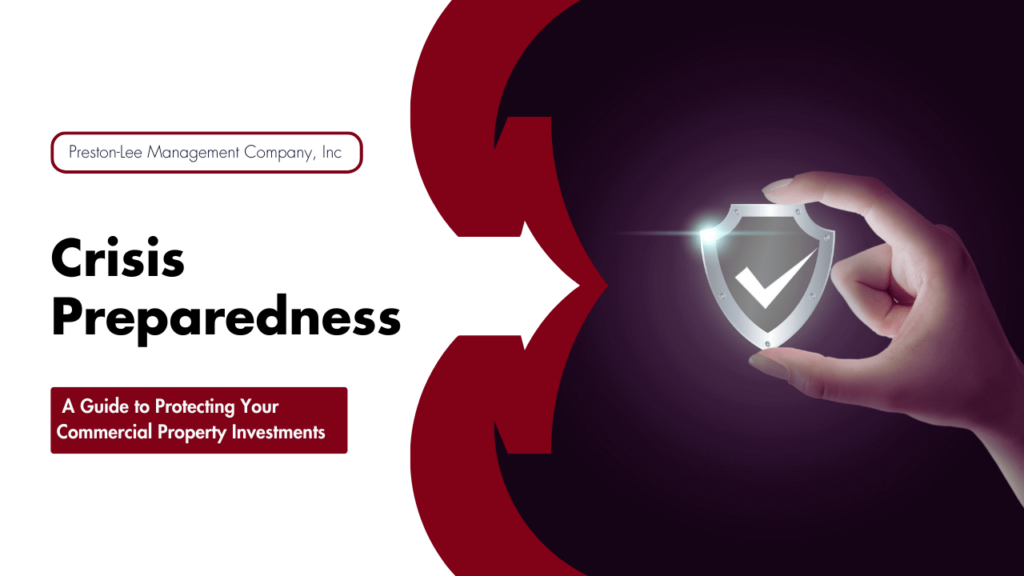
Even the most experienced real estate investor is often faced with complexities and uncertainties, especially in the present market. Keeping up with trends and shifts can be a full-time job.
There’s also an ongoing potential for a crisis. You never know when there will be a natural disaster or an economic downturn or a major fire that you need to deal with. Being prepared for such events is essential to protecting your investments and your future revenue streams.
As property managers in the High Desert focused on commercial investments, we have some insight into how to prepare for potential crises. We’re sharing some actionable strategies to mitigate risks.
How a Crisis Can Impact Commercial Real Estate
Crises can take many forms, both tangible and economic. Weather events such as earthquakes pose direct threats to properties, while recessions or industry shake-ups lead to financial market instability and unpredictable tenant behavior.
For commercial investors, the stakes are high. A single unmitigated disaster can cripple operations, disrupt tenant businesses, and significantly lower property values. You want to be ready.
Build a Comprehensive Risk Assessment Plan
Identify the risks that are unique to your property and industry. Begin by analyzing what types of crises are most likely to impact your investments. Whether it’s environmental risks, market-specific volatility, or regulatory changes, having a clear understanding of potential threats lays the groundwork for an effective readiness plan.
Next, figure out where you’re most vulnerable. Examine the structural integrity of your buildings, the stability of your tenants’ industries, and your financial cushion to handle business interruptions. Being aware of vulnerabilities helps you tailor protective measures.
Establishing Safety and Maintenance Protocols
Conduct regular inspections. Maintaining your properties in top condition can mitigate damage when disaster strikes. Regular checks on structural elements, safety systems, and compliance with building codes are non-negotiable aspects of property maintenance.
Implement any safety measures that will protect your tenants and their businesses. For example, investing in seismic retrofitting, flood defenses, or fire suppression systems can significantly reduce the impact of a crisis and protect both human lives and investment capital.
Financial Preparedness and Insurance Coverage
How can you prepare financially to emerge from a crisis?
Review your insurance policies and make sure they’re adequate. Do they cover the full range of potential crises? Understand the details of your coverage, from deductibles to limits, and regularly reassess as your portfolio expands or changes.
A financial buffer can be the difference between weathering a storm and suffering a knockout blow. Dedicated reserve funds ensure you can cover immediate costs without crippling cash flow or resorting to high-interest loans.
Communication Strategies for Crisis Management
 In times of emergency, clear communication with tenants, property managers, insurance adjusters, and local officials is vital. A predetermined plan detailing who communicates, what channels are to be used, and pre-approved messaging templates can streamline this process. Build relationships with your commercial tenants and establish open lines of communication for crisis scenarios. Their input can be invaluable both in planning and execution of response measures.
In times of emergency, clear communication with tenants, property managers, insurance adjusters, and local officials is vital. A predetermined plan detailing who communicates, what channels are to be used, and pre-approved messaging templates can streamline this process. Build relationships with your commercial tenants and establish open lines of communication for crisis scenarios. Their input can be invaluable both in planning and execution of response measures.
To protect your commercial property investments, crisis preparedness should be part of your strategic planning. By assessing risks, reinforcing structures, securing proper insurance, establishing a financial safety net, and crafting a clear communication plan, you can stand resilient in the face of adversity.
Let’s talk about where you are and how you can feel more prepared. Please contact us at Preston-Lee Management Company. We’ve been providing property management services in the High Desert for more than 30 years.
